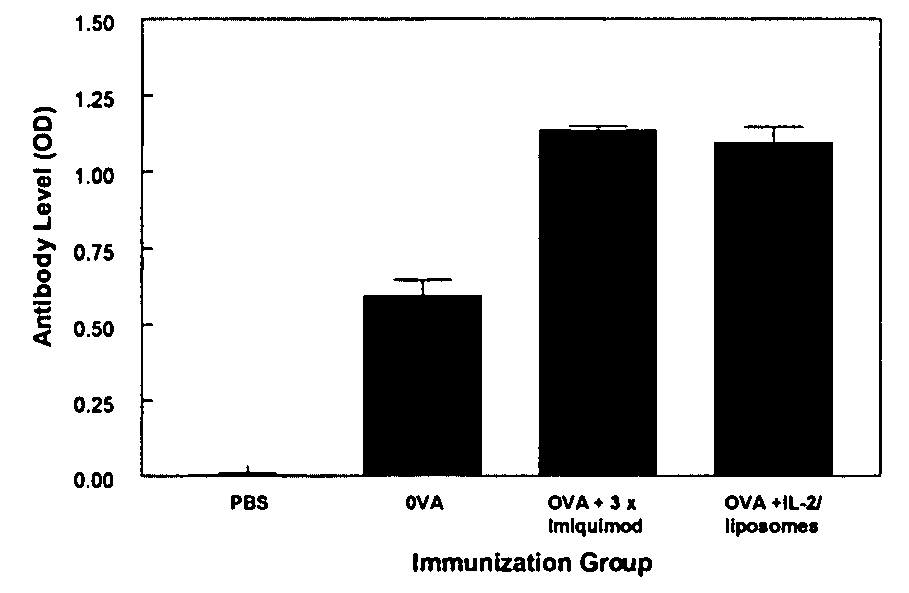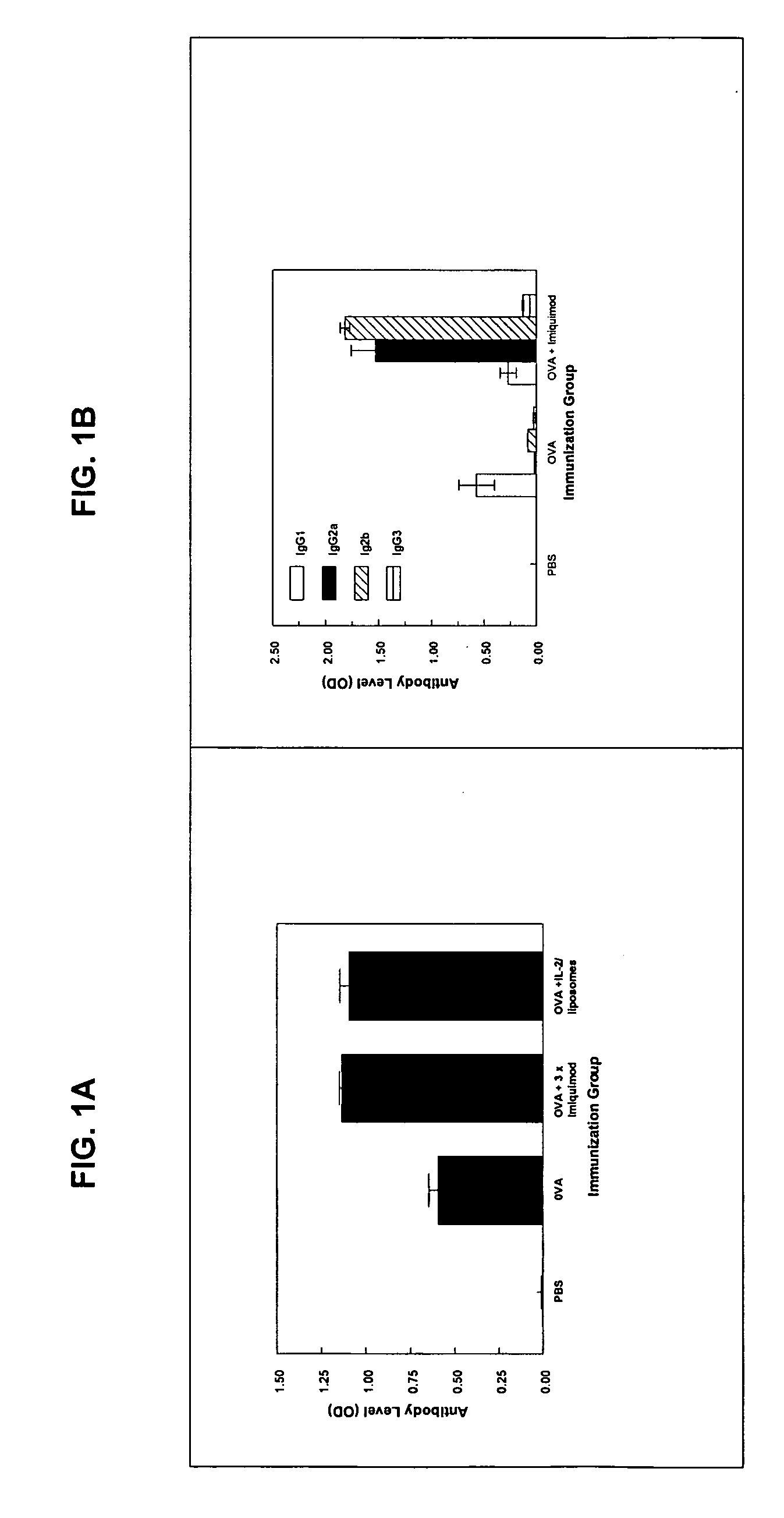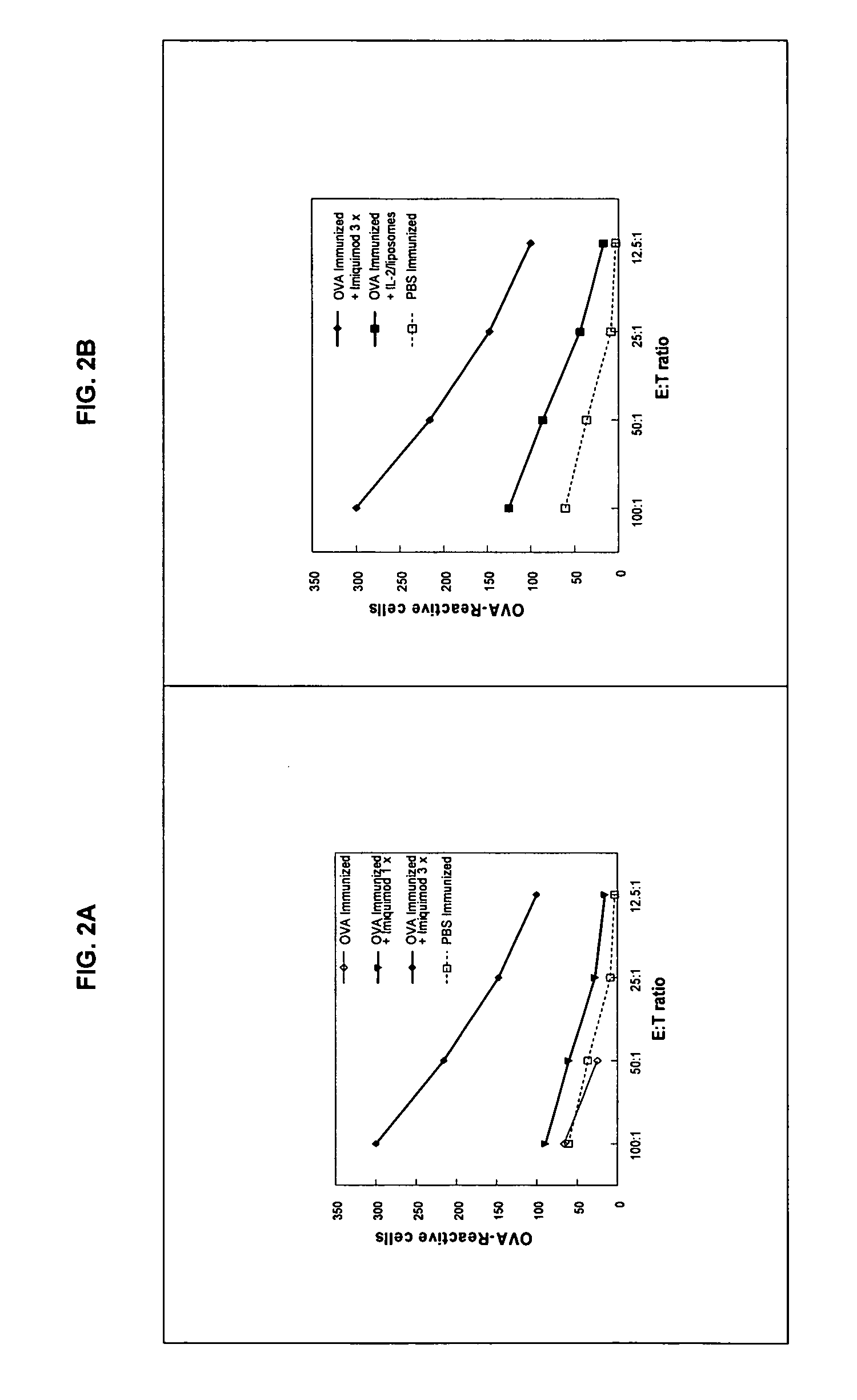Topical Toll Like Receptor Ligands as Vaccine Adjuvants
a technology of receptor ligands and vaccine adjuvants, which is applied in the field of vaccine adjuvants, can solve the problems of lack of potency, limited application range, and inability to use humans, and achieves the effect of high desirable valu
- Summary
- Abstract
- Description
- Claims
- Application Information
AI Technical Summary
Benefits of technology
Problems solved by technology
Method used
Image
Examples
Embodiment Construction
[0008]Toll-like receptor (TLR) ligands as vaccine adjuvants: TLR ligands are emerging as a new class of vaccine adjuvants. TLR are expressed on a variety of antigen presenting cells (APC), and when activated stimulate the differentiation and maturation of several populations of immune cells and release of a broad range of cytokines and other immunomodulatory molecules (1-3). There are several types of TLR which differ in the type of APC on which they are expressed, on the cytokines they induce once stimulated, and consequently on the effect they have on immune responses. For example TLR7 is expressed to various degrees on all subpopulations of human APCs including myeloid and plasmacytoid DC (4,5). By contrast, TLR9 is expressed only on plasmacytoid DC and B cells (5-7).
[0009]Several ligands have been identified that can bind to and activate each of these TLRs. Each ligand activates distinct TLRs. The best studied are the imidazoquinoline molecules imiquimod and resiquimod which act...
PUM
| Property | Measurement | Unit |
|---|---|---|
| weight | aaaaa | aaaaa |
| strength | aaaaa | aaaaa |
| time | aaaaa | aaaaa |
Abstract
Description
Claims
Application Information
 Login to View More
Login to View More - R&D
- Intellectual Property
- Life Sciences
- Materials
- Tech Scout
- Unparalleled Data Quality
- Higher Quality Content
- 60% Fewer Hallucinations
Browse by: Latest US Patents, China's latest patents, Technical Efficacy Thesaurus, Application Domain, Technology Topic, Popular Technical Reports.
© 2025 PatSnap. All rights reserved.Legal|Privacy policy|Modern Slavery Act Transparency Statement|Sitemap|About US| Contact US: help@patsnap.com



